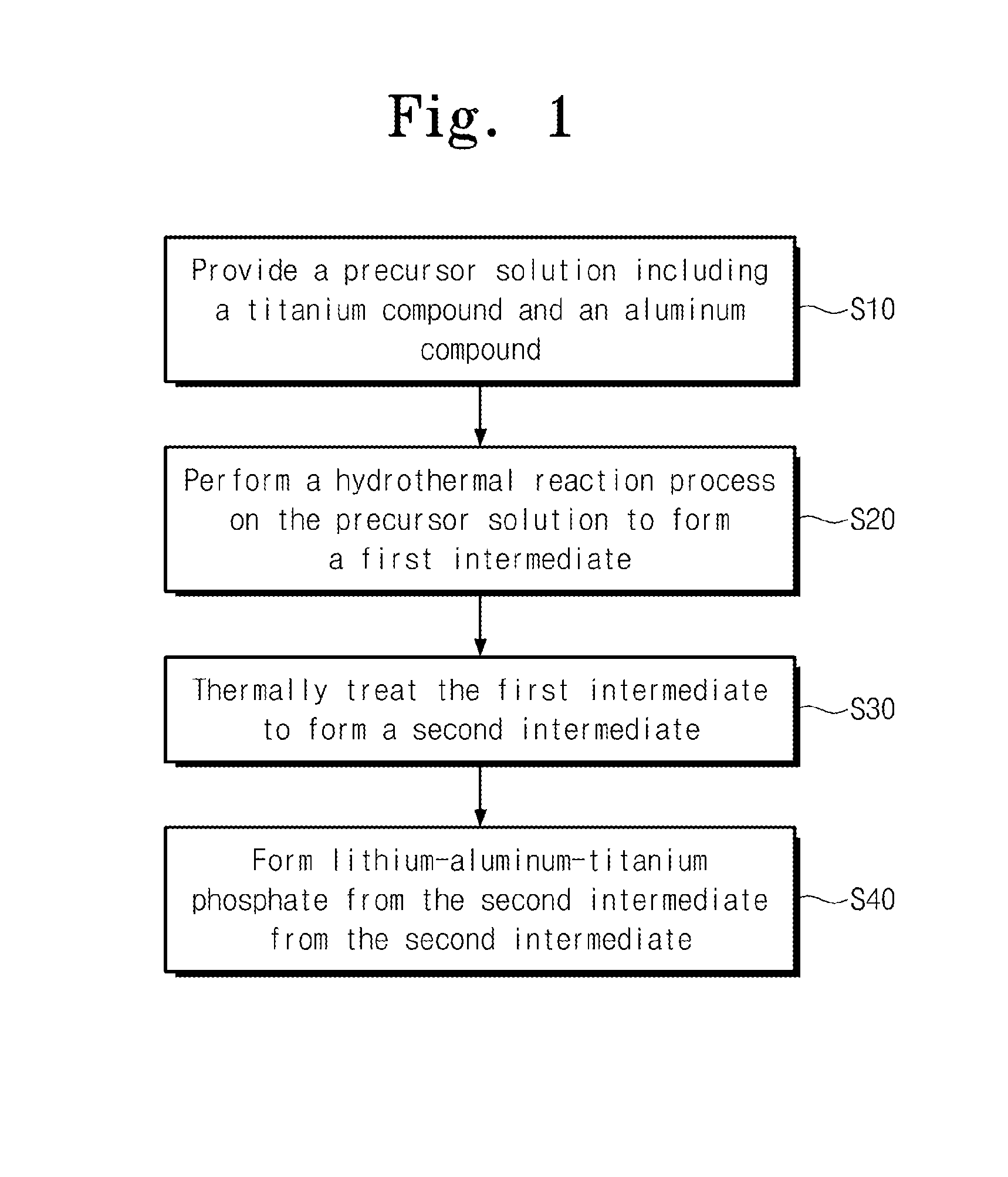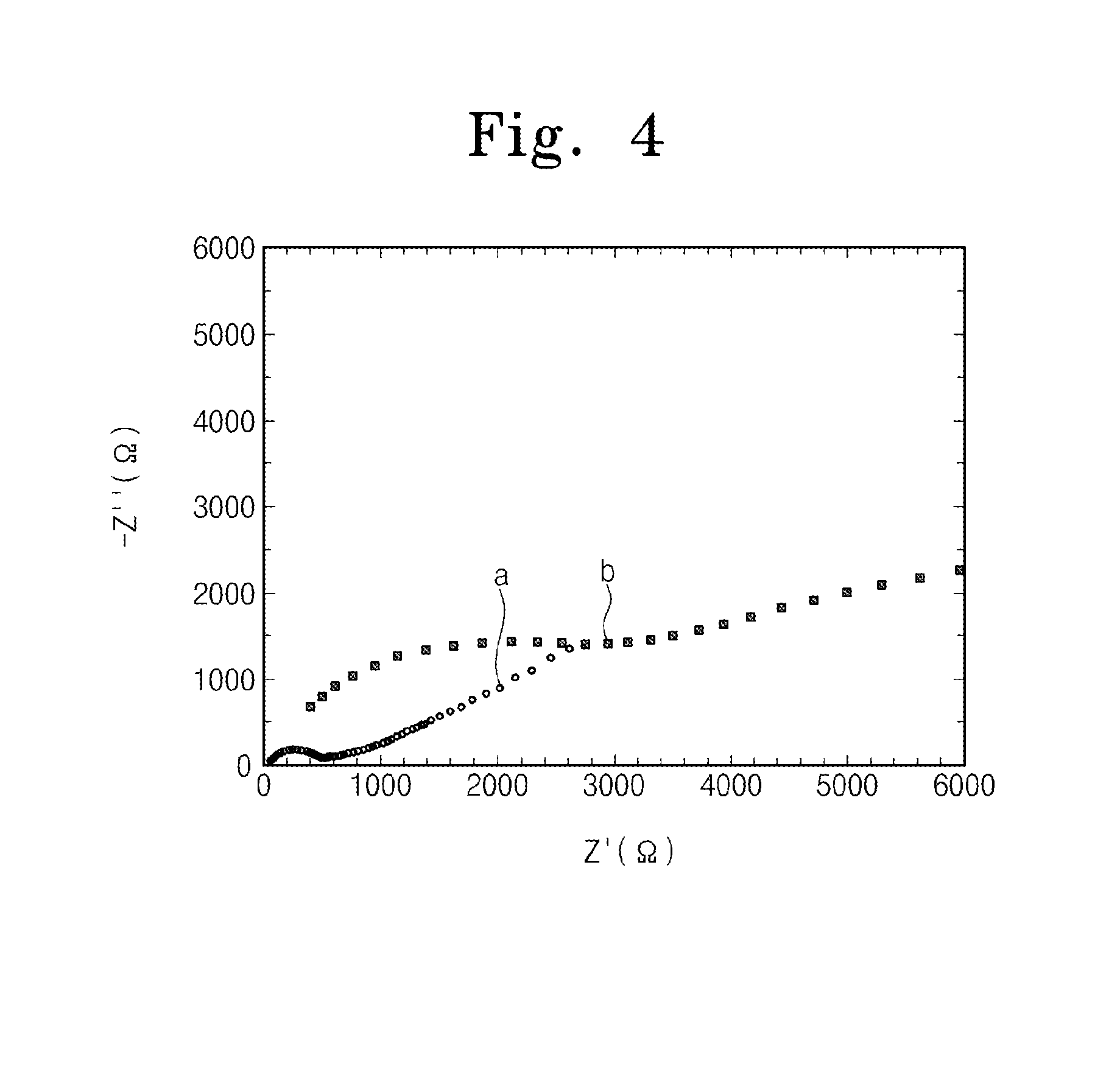Method of forming lithium-aluminum-titanium phosphate
a lithium-aluminum-titanium phosphate and lithium-aluminum-titanium technology, applied in the field of lithium-aluminum-titanium phosphate, can solve the problems of increasing power consumption of portable electronic devices and generating impurities, and achieves high purity and high ion conductance
- Summary
- Abstract
- Description
- Claims
- Application Information
AI Technical Summary
Benefits of technology
Problems solved by technology
Method used
Image
Examples
experiment example 1
Formation of Intermediate of Aluminum Oxide and Titanium Oxide Through Hydrothermal Reaction
[0036]A surfactant P123 (a product of Aldrich Co. LLC.) is added to deionized water. A content of the surfactant P123 is 1 wt % of the deionized water. The surfactant P123 is mixed with the deionized water for 1 hour or more. Titanyl sulphate (TiOSO4) is added to the deionized water, and then it is mixed with the deionized water for 2 hours or more. Aluminum nitrate nonahydrate (Al(NO3)3.9H2O) is mixed with the deionized water to form a mixture solution. The hydrothermal reaction of the mixture solution is performed in an autoclave at a temperature of 170 degrees Celsius for 12 hours, thereby forming the first intermediate. The first intermediate is cleaned by deionized water and alcohol, and then the cleaned first intermediate is dried at a temperature of 80 degrees Celsius for 12 hours or more. The dried first intermediate is thermally treated at a temperature of 400 degrees Celsius, thereb...
experiment example 2
Formation of Solid Electrolyte
[0039]Pressure is applied to the lithium-aluminum-titanium phosphate to form a pellet having a thickness within a range of about 1 mm to about 1.5 mm. After the pellet is heated from a room temperature to 900 degrees Celsius with a heating rate of 5 degrees increase per minute, the pellet may be fired at a temperature of 900 degrees Celsius for 3 hours, thereby forming a solid electrolyte.
Characteristic Evaluation of Solid Electrolyte
[0040]A copper foil, a carbon paste, the solid electrolyte, a carbon paste, and a copper foil are sequentially stacked and then may be dried to form a cell. The cell is dried at a temperature of 80 degrees Celsius for 12 hours in order to volatilize a solvent in the carbon pastes. An alternating current (AC) impedance of the solid electrolyte is measured using a frequency response analyzer (Solartron HF1225) under a frequency condition of about 104 Hz to about 105 Hz. An ion conductance of the solid electrolyte is calculate...
PUM
 Login to View More
Login to View More Abstract
Description
Claims
Application Information
 Login to View More
Login to View More - R&D
- Intellectual Property
- Life Sciences
- Materials
- Tech Scout
- Unparalleled Data Quality
- Higher Quality Content
- 60% Fewer Hallucinations
Browse by: Latest US Patents, China's latest patents, Technical Efficacy Thesaurus, Application Domain, Technology Topic, Popular Technical Reports.
© 2025 PatSnap. All rights reserved.Legal|Privacy policy|Modern Slavery Act Transparency Statement|Sitemap|About US| Contact US: help@patsnap.com



